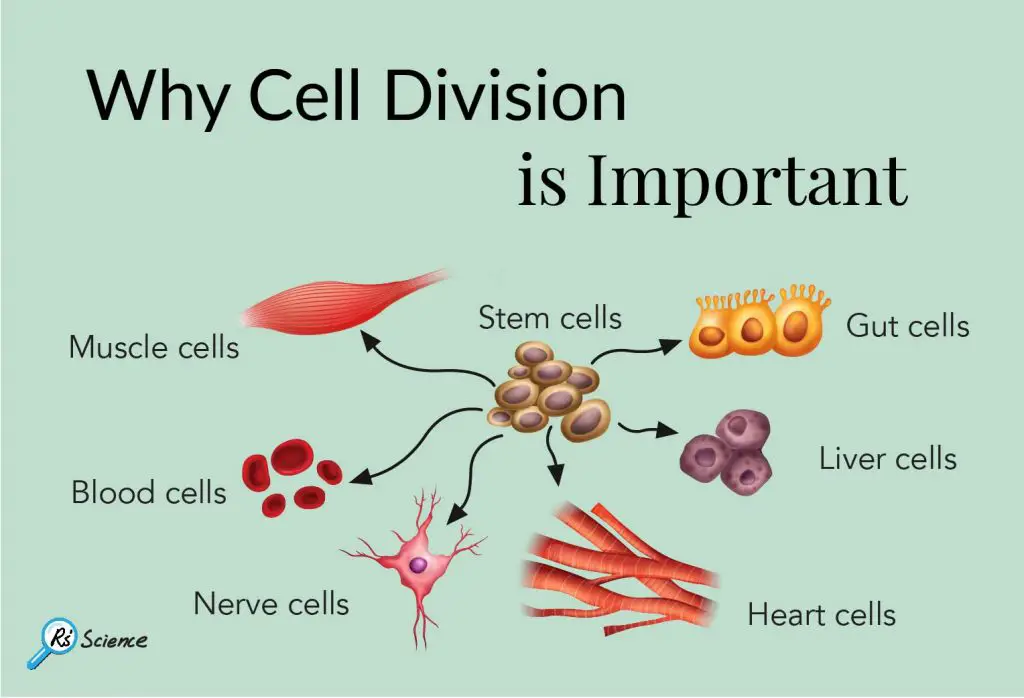Because cell division is the foundation of life.
The fundamental definition of “Life” is a living creature that can grow and reproduce for the next generations. In other words, “Cell division” is the fundamental behavior of living creatures.
This article covers
Why cell division is important
Cell division is necessary for the growth of organisms, repair of damaged tissues, healing and regeneration, and reproduction.
Single-cellular organisms: reproduction
Cell division is the process by which a parent cell divides into daughter cells. Cell division is critical for both single-cellular and multi-cellular organisms. For single-celled organisms like Amoeba or Paramecium, cell division can directly grow the number of their population.
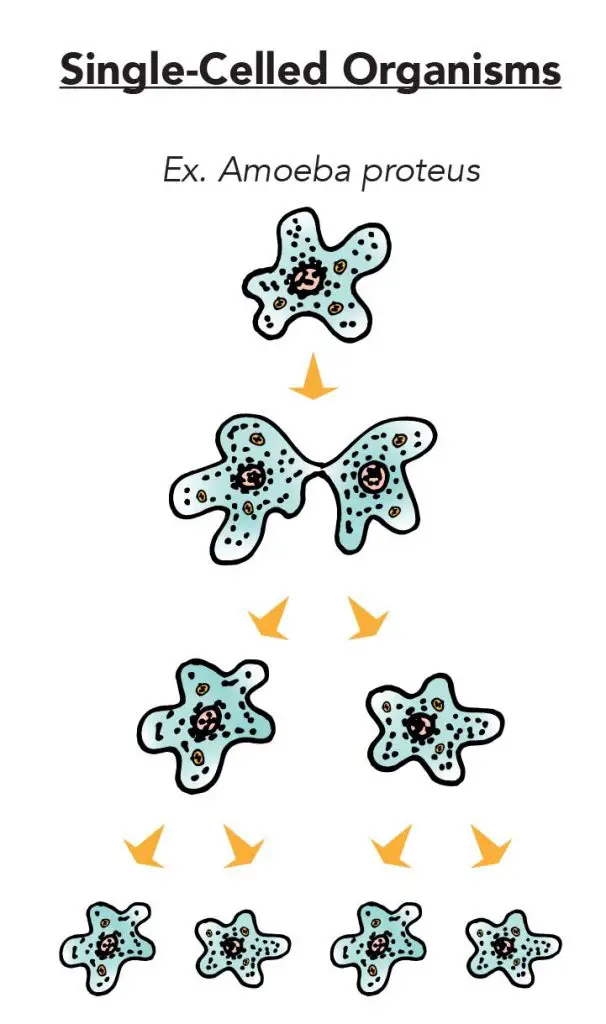
[In this figure] Cell division is a way for single-celled organisms to reproduce.
Multi-cellular organisms: growth, replenishment, regeneration, and reproduction
Growth and replenishment
Cell division in multi-cellular organisms like us allows the organisms to grow in size by increasing the number of cells in their body. It also provides new cells to replace old cells or to repair damaged cells. See the following images to learn what cell division can do for a living organism.
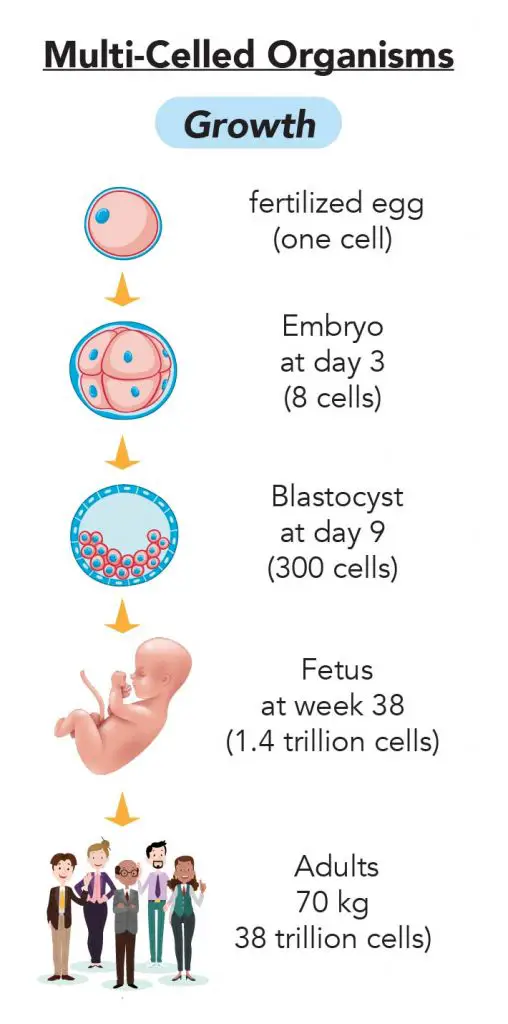
[In this figure] The multi-celled organisms like us, their cell division doubles the cell numbers in the body. Cell division allows us to grow from one embryonic cell to a total of 38 trillion cells in the adult human body.
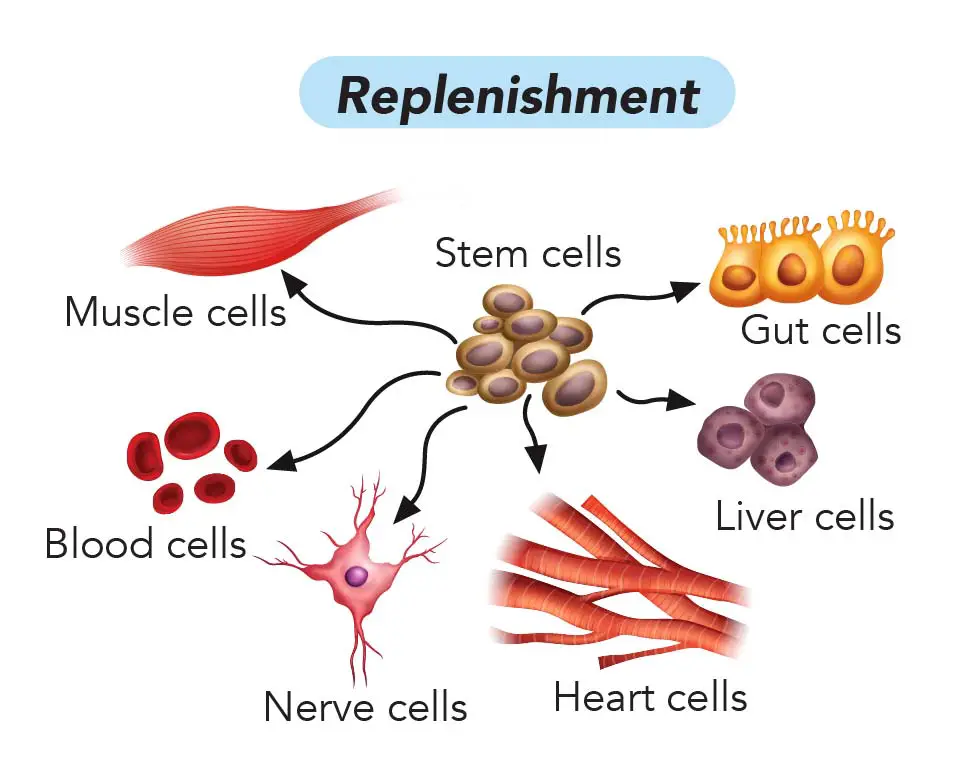
[In this figure] Cells in our body have a limited lifespan.
The stem cells, which have the capability to become several cell types, consistently divide to replenish the loss of old cells. Different cell types have various turnover rates. For example, cells that protect the inner surface of our stomach and gut need to change every 2-5 days. Our skin cells need to be replenished every other week. Liver cells can work for a year before retirement. About 1-10% of heart muscle cells renew every year. However, nerve cells in the brain and lens cells in the eyes have to work for the entire lifetime.
Regeneration
We inevitably got injured from time to time. Our body can turn on emergency cell division to heal wounds. For example, our skin cells can rapidly divide to heal the loss of a protective skin layer.
Some animals such as salamanders have remarkable healing abilities. Salamanders (amphibians) have been hailed as champions of regeneration, exhibiting a remarkable ability to regrow tissues, organs, and even whole body parts. Scientists are now studying the regrowth of Salamanders’ limbs and hope we can learn how to regenerate human bodies in the future.
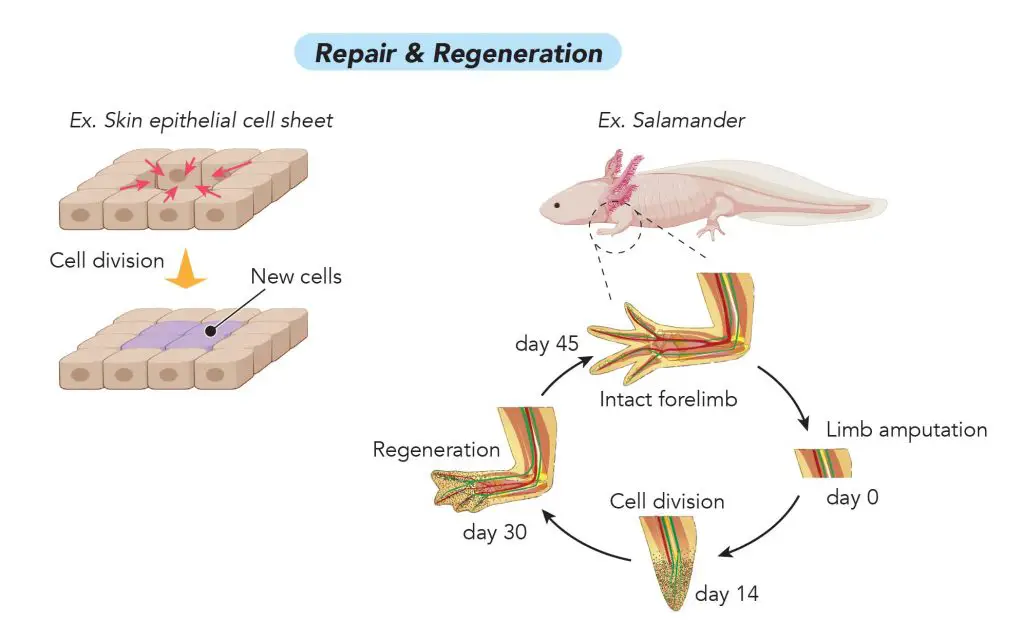
[In this figure] Repair and regeneration of tissue requires cell division.
The cell division replenishes the lost cell, therefore to repair damaged tissue and even the whole body parts in Salamander.
Reproduction
Cell division also plays a central role in the reproduction of multi-celled organisms. Some primitive animals, like starfish, hydra, or flatworm, can reproduce by simply dividing into several pieces and each portion then regenerates its missing parts by cell division. Other multi-cellular organisms like humans need a special process of cell division, called Meiosis, to create sperms and eggs for reproduction.
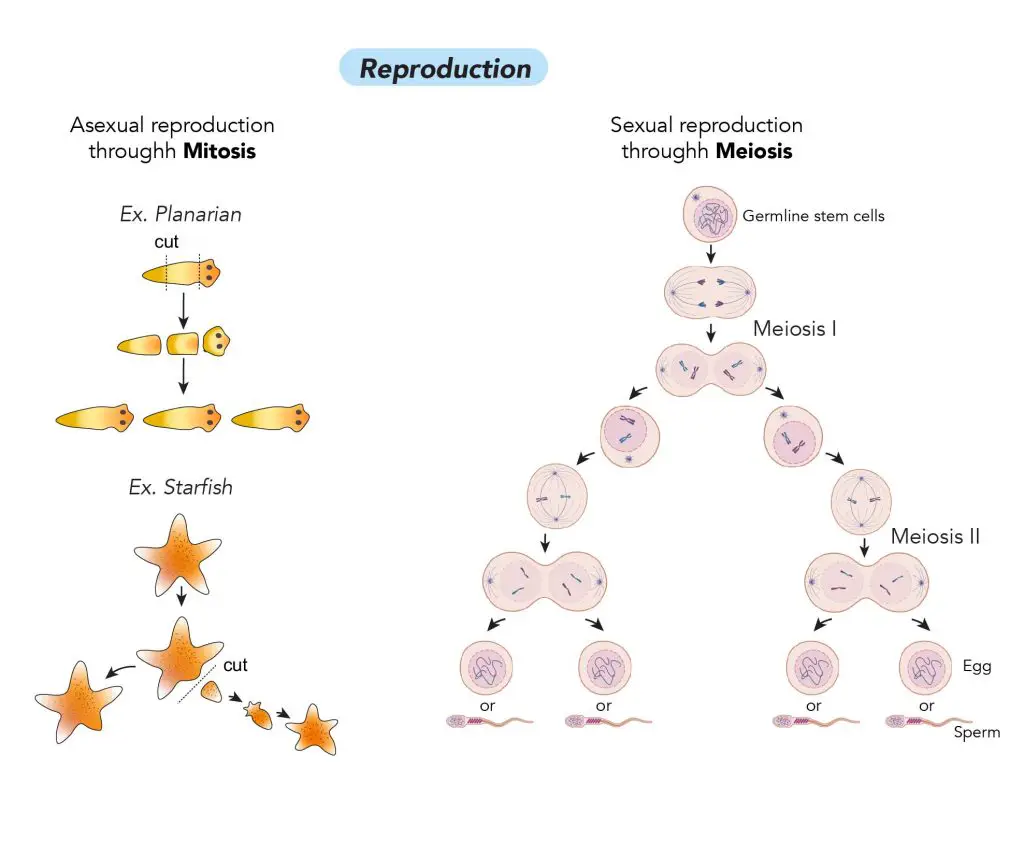
[In this figure] The importance of cell division in reproduction in multi-cellular organisms.
Primitive animals, such as starfish, hydra, or flatworm reproduce themselves by regular cell division. In contrast, human reproduction requires a more complicated cell division called meiosis.
Two types of cell division – Mitosis and Meiosis
There are two types of cell division: Mitosis and Meiosis. Mitosis is a cell division that one parent cell divides into two daughter cells. The two daughter cells inherit identical genetical information (DNA) from their parent cell. The cell division that we mentioned above to grow our body and repair damaged cells belongs to Mitosis.
On the other hand, Meiosis is a reduction division in which the daughter cells only carry half of the parent cells’ genetic information. Meiosis only happens during the generation of sperms and eggs.
Mitosis
Cells in our body except for sperms and eggs have two copies of genetic information (saved as DNA codes). We call the genetic status of these cells “diploid” or “2n”. Before the cell division, the parent cell first replicates its DNA to make two identical copies of entire genetic information. The duplicated DNA then splits equally into two daughter cells. The two daughter cells are identical to the parent cells and maintain as “diploid” or “2n”.
Meiosis
Like the beginning of mitosis, the parent cell replicates its DNA. However, in Meiosis, DNA will be divided into four parts by two meiotic cell divisions. As a result, one parent cells give rise to four gamete cells (sperms or eggs) with only half of the parent cell’s genetic information. We name this cell status “haploid” or “n”. After fertilization, the fertilized egg acquires DNA from both sperm or egg and returns back to “diploid” status (2n).
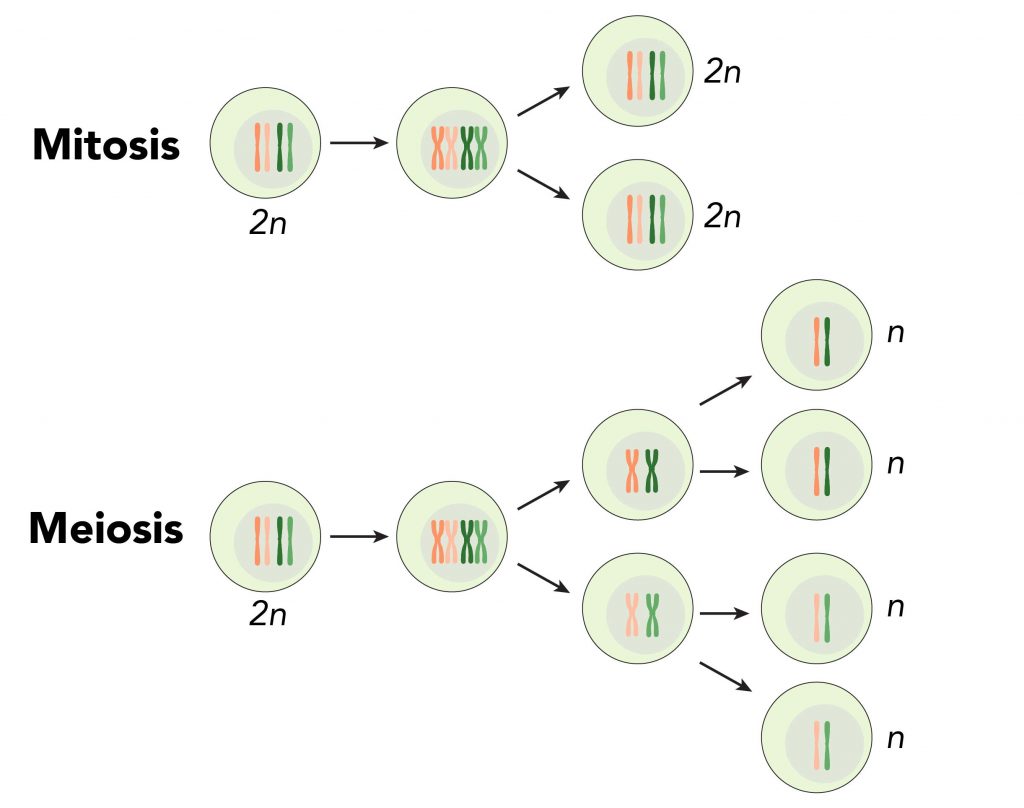
[In this figure] Mitosis and Meiosis
Next week, I will discuss the phase of mitosis in more detail, how cells pack 3 meters long DNA into the tiny nucleus without tangling, and the food model of mitosis. Stay tuned!

